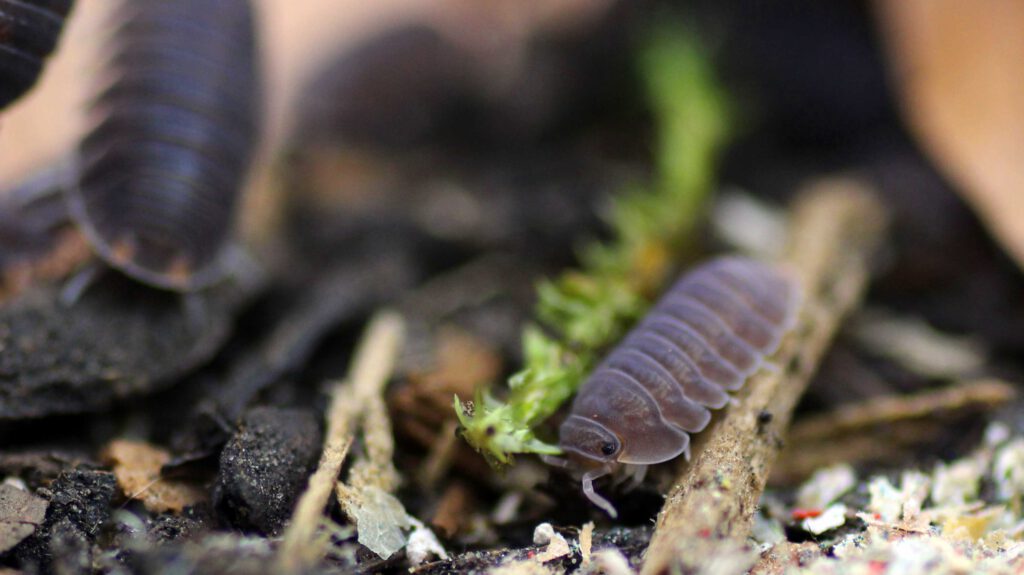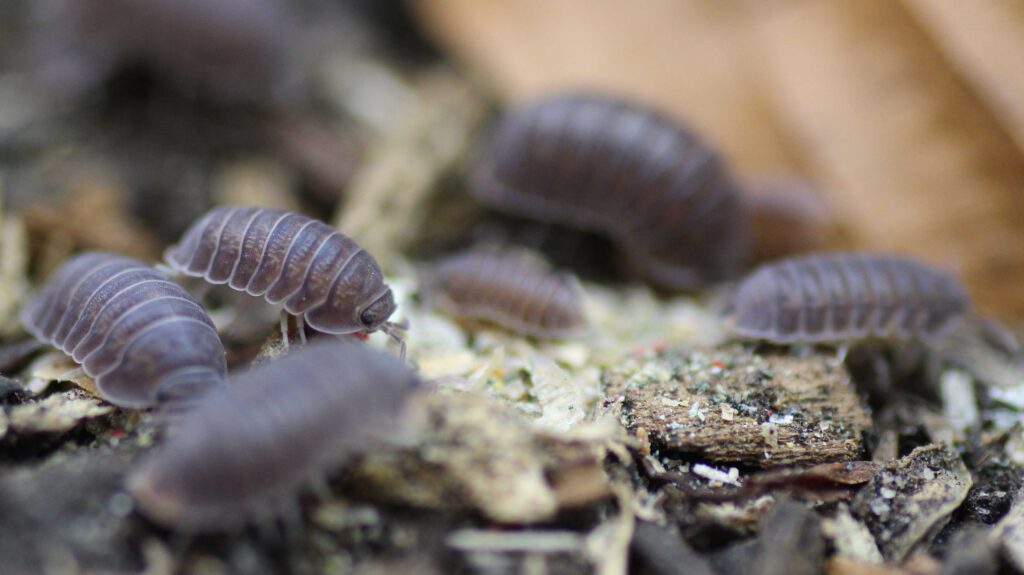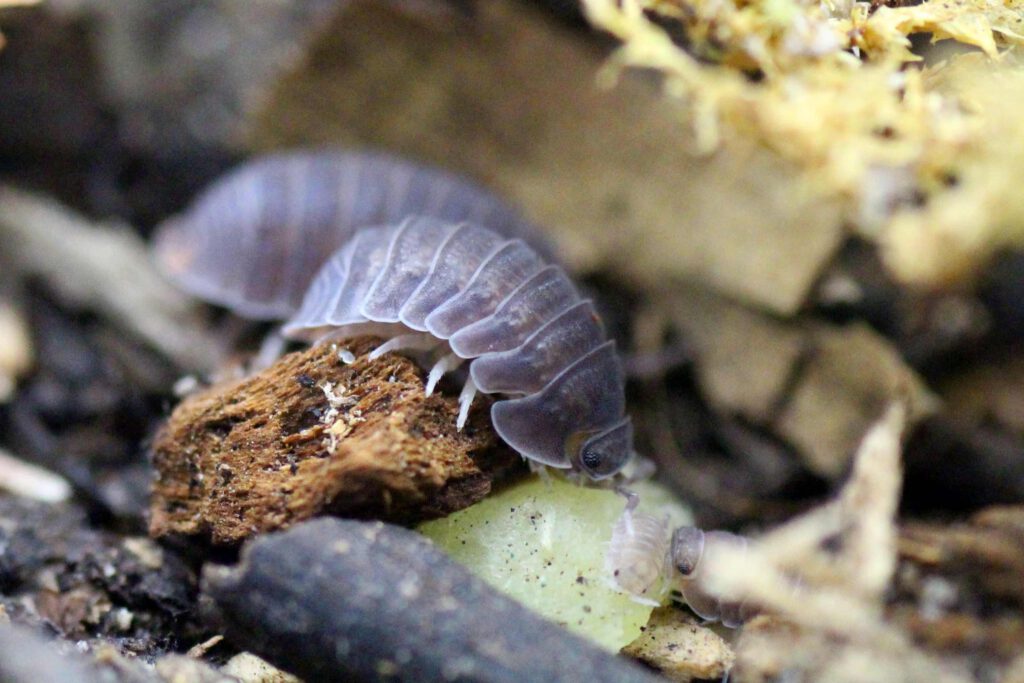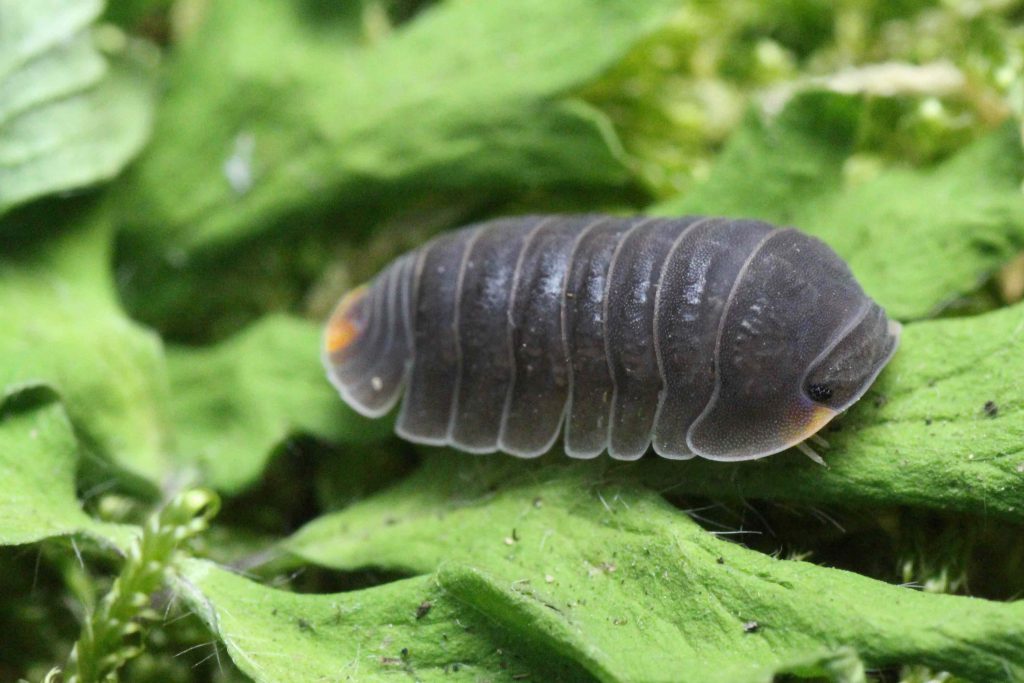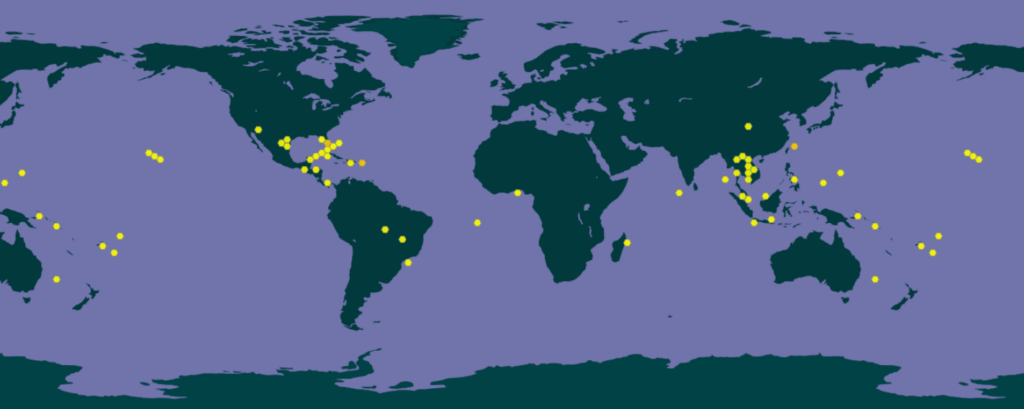Cubaris murina
Popular colour variations:
- Cubaris murina “orange”

Origin:
- Pantropic species, tropical and subtropical zones of all continents

Temperature:
- during the day 22-27 °C

Size:
- up to 1,2 cm
Cubaris murina is a very active and showy beginner species. Looking into the terrarium you can see animals on the ground running around again and again.
As you can see in the short video, they search the substrate for anything usable.
They are definitely not picky!
Sometimes the looking for food through of the upper surface layer reminds of the behaviour of wild pigs.
If the hunger is satisfied, they’ll wait very gladly with many mates under a hiding place until the twilight comes and one can finally look up, what fell to the on the ground during the day.
In nature they are very brash and fearless. It is something very special when you see a Cubaris murina rolled up and lying on the ground. Its escape behaviour is much more pronounced: As soon as they feel disturbed, they run around in panic until they find a place to hide.
Isopod Tank:
Since this isopod species, with its 1.2 cm, belongs to the smaller isopods, you can keep 12 animals in a 1 litre can without hesitation.
However one should prepare themselves for the fact that very fast offspring will announce itself and from about 25 animals on you should switch to a larger container.
The substrate height should be at least 3 cm, as Cubaris murina like it a bit more humid. The deciduous forest humus ensures good absorption.
The water is then slowly released into the air, where it is released into the air. The Cubaris murina feels great when the humidity exceeds 70%.
The average number of born young islets per litter is 25. The incubation period is, with 17 days, only half a day slower than Porcellionides pruinosus “Cuban Isopod”. (Source: Brazilian Journal of Biology)
I have noticed that no other species of isopod likes to eat fruit as much as Cubaris murina. They rush to anything that tastes sweet.
They don’t care if it’s day or night. Additionally one should offer enough proteins to the animals.
Thereby the birth rate and cannibalism can be influenced positively.
Due to the typical Cubaris Duckface and the reddish uropod at the end of the isopod, it has a very impressive appearance.
Especially for those who want to get into the Cubaris keeping, it is a perfect choice for a successful start.
For me it is the clean up crew for all terrariums with a relative humidity of 70% or more.

Tip:
A too high occupation density restricts the reproduction.




